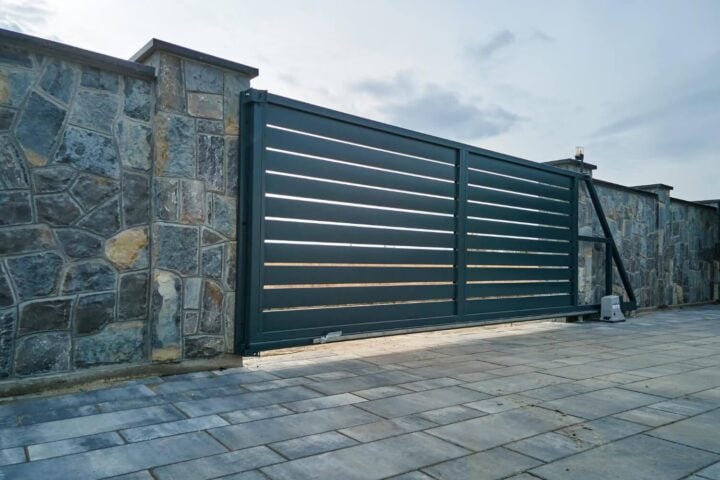Creating an artificial plant wall is a fantastic way to bring the beauty of nature into your home without the upkeep of real plants. An artificial plant wall can transform any space, adding vibrant greenery and a touch of elegance. This guide will walk you through the steps to create your own stunning artificial plant wall, ensuring it looks natural and beautiful.
Why Choose an Artificial Plant Wall?
Artificial plant walls offer several benefits over their real counterparts. They require no watering, no sunlight, and minimal maintenance, making them perfect for busy lifestyles or areas with little natural light.
Benefits of Artificial Plant Walls
-
Low Maintenance: No need for watering, trimming, or sunlight.
-
Long-lasting: Artificial plants maintain their appearance for years.
-
Allergy-Friendly: Ideal for people with allergies to real plants.
-
Versatile: Suitable for any room, regardless of light conditions.
For a variety of options to suit your needs, consider exploring and purchasing small fake plants to enhance your plant wall.
Materials Needed for an Artificial Plant Wall
Before starting your project, gather all the necessary materials to ensure a smooth crafting experience.
Essential Supplies
-
Artificial Plants: Choose a variety of small fake plants and greenery.
-
Wall Frame or Panel: A sturdy base to attach the plants.
-
Wire Mesh or Chicken Wire: To secure the plants.
-
Staple Gun or Nails: To attach the mesh to the frame.
-
Floral Wire or Cable Ties: For securing the plants to the mesh.
-
Scissors or Wire Cutters: For trimming stems and wires.
-
Hot Glue Gun (optional): To secure plants and decorative items.
Steps to Create an Artificial Plant Wall
Follow these steps to create a beautiful and realistic-looking artificial plant wall.
1. Plan Your Design
Start by planning the design and layout of your plant wall. Consider the size, shape, and type of plants you want to use.
-
Choose a Location: Decide where you want to install the plant wall. It could be a feature wall in your living room, a backdrop in your office, or a unique headboard in your bedroom.
-
Select Plants: Choose a variety of artificial plants that complement each other in color, size, and texture.
2. Prepare the Wall Frame
Prepare the base of your plant wall using a sturdy frame or panel.
-
Measure and Cut: Measure the area where you want to install the plant wall and cut the frame or panel to size.
-
Attach Mesh: Staple or nail the wire mesh or chicken wire to the frame, ensuring it is securely attached.
3. Arrange and Secure the Plants
Arrange your artificial plants on the mesh to create a natural and full look.
-
Trim Stems: Use scissors or wire cutters to trim the stems of the plants as needed.
-
Secure Plants: Use floral wire or cable ties to attach the plants to the mesh. For extra security, you can also use a hot glue gun.
-
Layering: Start with larger plants as the base layer and fill in with smaller plants and greenery to create depth and texture.
4. Add Decorative Elements
Enhance the aesthetic appeal of your plant wall with decorative elements.
-
Lights: Incorporate string lights or fairy lights for a magical touch.
-
Decorative Stones or Shells: Scatter decorative stones or shells among the plants for added interest.
-
Miniature Figurines: Add tiny figurines or statues to create a themed wall.
For inspiration and a wide selection of artificial plants, you can buy artificial tree plants to find the perfect additions to your plant wall.
Creative Ideas for Artificial Plant Walls
There are countless ways to design an artificial plant wall. Here are some ideas to inspire your project.
Themed Plant Walls
Create plant walls based on specific themes to match your decor or interests.
-
Tropical Paradise: Use large, leafy plants and vibrant flowers to create a tropical vibe.
-
Zen Garden: Incorporate bamboo, ferns, and small stones for a tranquil zen garden effect.
-
Fairy Tale Forest: Use a mix of greenery, moss, and fairy lights to create a whimsical fairy tale scene.
Seasonal Plant Walls
Design plant walls that reflect the current season for a festive touch.
-
Spring: Use pastel-colored flowers and light green foliage to evoke the feeling of spring.
-
Summer: Incorporate bright, vibrant flowers and tropical plants for a summery vibe.
-
Fall: Use autumnal colors, faux leaves, and pine cones for a cozy fall wall.
-
Winter: Add white flowers, faux snow, and miniature evergreens for a winter wonderland effect.
Tips for Making Realistic Artificial Plant Walls
To ensure your plant wall looks as natural and lifelike as possible, follow these tips:
Use High-Quality Artificial Plants
Invest in high-quality artificial plants that closely resemble real plants. This will make your plant wall look more authentic.
Vary Plant Sizes and Types
Mix different types and sizes of plants to create a more dynamic and natural-looking arrangement.
Layering and Depth
Layer plants in different heights and depths to add dimension and realism to your plant wall.
Incorporate Natural Elements
Add real stones, shells, or driftwood to enhance the natural appearance of your plant wall.
Maintaining Your Artificial Plant Wall
While artificial plant walls require minimal maintenance, occasional care will keep them looking their best.
Dust Regularly
Dust the plants and decorative elements regularly with a soft, dry cloth to keep them looking fresh and vibrant.
Avoid Direct Sunlight
Prolonged exposure to direct sunlight can cause artificial plants to fade. Place your plant wall in a location with indirect light.
Gentle Cleaning
If needed, gently clean the plants with a damp cloth to remove any dirt or debris. Avoid using harsh chemicals.
Advanced Techniques for Artificial Plant Walls
For those looking to take their plant wall design to the next level, consider these advanced techniques:
Creating Custom Colors
Customize the color of your artificial plants to perfectly match your decor.
-
Use Fabric Dye: Submerge artificial flowers in fabric dye for a subtle color change.
-
Spray Paint: Lightly spray the plants with paint for a more dramatic effect.
Adding Fragrance
Incorporate a pleasant fragrance into your plant wall using essential oils or scented sprays.
-
Essential Oils: Apply a small amount of essential oil to the plants.
-
Scented Sprays: Use scented sprays designed for artificial plants to add a fresh scent.
Incorporating Artificial Plant Walls into Home Decor
Artificial plant walls are versatile and can be used to enhance various areas of your home.
Living Room Feature Wall
Use your plant wall as a stunning feature in your living room.
-
Behind the Sofa: Create a lush green backdrop behind your sofa.
-
Television Wall: Frame your television with a plant wall for a stylish look.
Office Decor
Add a touch of nature to your office space with a plant wall.
-
Behind the Desk: Create a calming backdrop behind your desk to boost productivity.
-
Reception Area: Make a great first impression with a plant wall in your reception area.
Bathroom Decor
Add a touch of greenery to your bathroom with a plant wall.
-
Humidity Resistant: Artificial plants are perfect for bathrooms as they won’t be affected by humidity.
-
Compact Sizes: Use small, compact plant walls to fit in smaller bathroom spaces.
Conclusion
Creating an artificial plant wall is a fantastic way to bring lasting beauty and greenery into your home. By following the steps outlined in this guide, you can craft a stunning plant wall that looks natural and requires minimal maintenance. Whether you’re designing a themed plant wall, a seasonal display, or simply adding a touch of greenery to your decor, artificial plants offer endless possibilities.
Ready to get started? Explore a wide range of small fake plants and buy artificial tree plants to find the perfect additions for your plant wall. With a bit of creativity and effort, you can transform your home with beautiful, custom-made artificial plant walls. Happy crafting!











